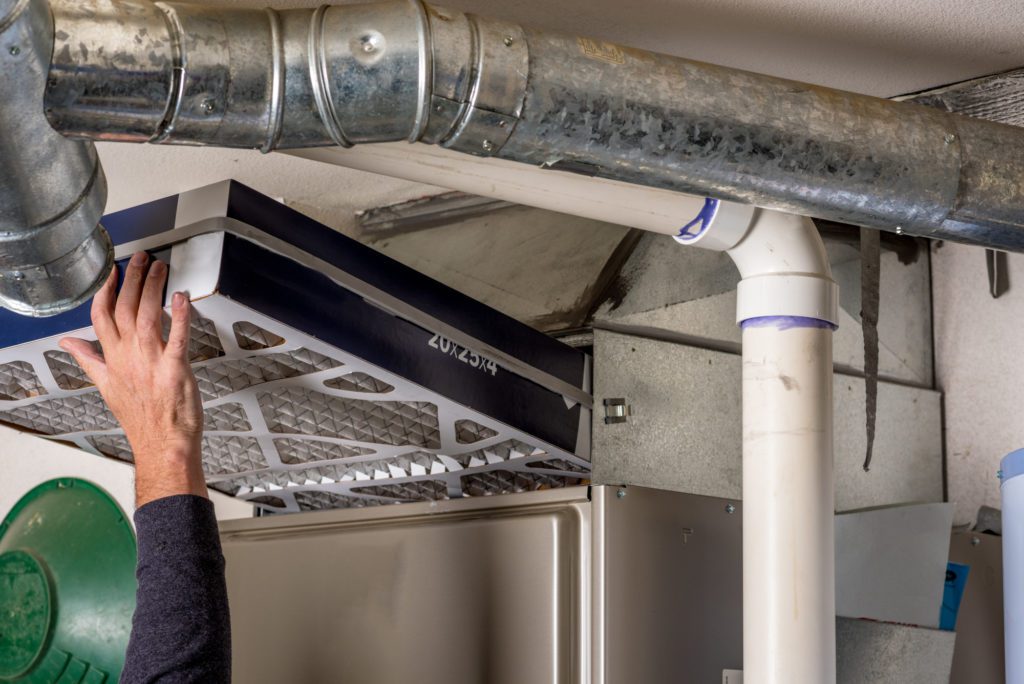
DIY or Don’t: Your Guide to Furnace Issues and Repairs
For many people, the idea of spending hours working on a significant household repair project is almost too frightening to consider. And yet, for other people, tackling a seemingly impossible project like this can be an exciting way to get “their hands dirty.” It gives them a feeling of satisfaction and accomplishment that they can enjoy long after the job is done.
What if you have furnace issues? Should you DIY or not?
In truth, there is no right answer here. What you should do depends on your situation and the nature of the problem you are trying to solve.
Reading our guide to when you can DIY and when it’s best to contact a professional will help you decide which route to take next time you have a problem with your furnace.
Common Furnace Problems
There’s not too much behind the door of a furnace to surprise an HVAC expert. When they get a call for help, it’s likely for one of these issues:
- Short-cycling
- Lack of heat
- Low airflow
- Strange odors
- Weird noises
In many cases, the HVAC system has been showing signs of an imminent breakdown for months. Sometimes, the system quits working with no notice.
What Is Really Going on Here?
When your furnace smells funny, makes weird noises, or won’t keep your home warm, there’s always an underlying cause. Sometimes it’s as simple as a dirty furnace filter or a worn-out thermostat.
By the way, both of those issues make great DIY home maintenance tasks.
On the other hand, when a furnace breaks down, you could be looking at a complex issue. Your furnace relies on various mechanical and electrical components to run smoothly. Your furnace problems could be a result of:
- Faulty switch(es)
- Worn blower belts or bearings
- Bad blower motor
- Faulty ignition or pilot control
- Control board
- Gas supply issue
- Thermocouple malfunction
- Rusted flame sensors
- Worn belts or bearings
- Cracked heat exchanger
While this is not an exhaustive list, it’s an excellent place to start troubleshooting when you have furnace issues.
The DIY Furnace Repair Specialist
Unlike a qualified HVAC expert, most homeowners don’t have much experience troubleshooting and repairing HVAC equipment. Don’t be discouraged! There are a few repairs DIY enthusiasts can make with relatively little fuss.
Out with the Old and In with the New Air Filter
Anyone, and we mean literally anyone, can change a dirty furnace filter.
How do you know when it’s time for a new filter?
Glad you asked!
Signs you need a fresh air filter for your furnace to include the following:
- Dust, dirt, and debris clog your vent covers
- Dust covered air registers clogged
- Dust and grime inside the furnace box
These are the outward signs. Reduced heating capacity and furnace short cycling are also clues that you need to switch the old, dirty filter with a fresh, new one.
Tripped Breakers and Flipped Switches
Ask any HVAC technician what makes them laugh (inside, of course) the most. What do you suppose they’ll say?
It’s not the calls from customers who’ve run their gas furnace for several months without a filter — yes, it happens. Instead, it’s answering an emergency HVAC service call and discovering that there’s nothing wrong with the furnace upon arrival at the customer’s home.
Then, why isn’t it turning on?
The client either had a tripped breaker or someone in the home flipped the furnace switch to the OFF position. Incidentally, both of these problems can be solved without calling for HVAC repair.
An electrical outage or blown fuse is usually the cause of a tripped circuit breaker. As far as a flipped switch, that’s a question to ask someone else — try starting with the kids.
Another Easy DIY Furnace Fix
Unless you live solo, you’ve had at least a few run-ins with your partner or your housemates.
Someone ate the leftovers you were saving for lunch. Someone leaves the lights on in every room of the house. Someone turns the thermostat up too high or down too low.
The third statement we’re going to address is the thermostat problem.
Typically, when people argue over indoor temperatures, it’s an issue of metabolism. Certain individuals are always cold, no matter how high you set the thermostat. Others tend to feel too warm all the time.
A faulty thermostat could also be to blame. You can troubleshoot for a potential problem with the thermostat by:
- Turning the thermostat up to the highest setting
- Waiting a few minutes
After a few minutes, if the heat doesn’t start working correctly, you’ve likely got a problem thermostat.
If you have a Smart thermostat (and we hope you do), try changing the batteries. Next, grab a small, dry paintbrush and dust the interior components of the thermostat.
If none of your troubleshooting results in a fully-operating furnace, it’s time to quit fiddling with the thermostat.
Go ahead and call an HVAC specialist. It’s possible they can repair the thermostat.
It’s also possible they’ll suggest replacing the defective thermostat with a new and more effective unit.
Pilot Lights and Thermocouples
The pilot light and thermocouples often create much grief for homeowners with a gas furnace, especially if you never maintain them.
But they’re both necessary furnace components. They work to heat your home and keep the furnace from operating at peak efficiency. They are the heart of your furnace, and they need to be checked every year or two by you (or a professional).
What’s the difference between a pilot light and a thermocouple?
The Trusty Pilot Light
A pilot light is a small flame that is stays lit 24/7 in gas appliances (stoves, water heaters, furnaces).
When you turn on your gas furnace, the gas releases to the main burner. If the pilot light is working, it ignites the gas. In a few minutes, you’ll have heat.
What’s a Thermocouple?
Gas furnaces require multiple safety devices. One of those, the thermocouple, senses the presence of a flame. It then controls how much gas flows to the furnace.
The tip of the thermocouple sits in the pilot light flame. This keeps the thermocouple tip heated at all times. When the pilot goes out, the tip of the thermocouple cools, which makes the gas valve close.
Newer gas furnaces usually utilize electronic ignition instead of a standing pilot light. If your furnace uses electronic ignition, your safety mechanism is called a flame sensor.
What’s the Point?
If you’re looking for another slightly more challenging DIY furnace repair, you can try restoring a bad thermocouple or flame sensor with careful cleaning. However, if cleaning doesn’t work, both of these furnace parts are inexpensive to replace.
Tip: Unless you’re comfortable working with gas appliances, it’s easier (and likely more economical) to call an HVAC company to replace these and other furnace parts.
You Can DIY General Furnace Maintenance
We’ve already mentioned changing the air filter. While that’s part of routine furnace maintenance, there are several other tasks DIYers can easily do with less than three hours and a few dollars.
- For starters, remove the front panel of the furnace.
- Then, wipe down the inside of the furnace with a damp cloth.
- Vacuum up debris with a small handheld vacuum
- Slide out the fan unit and clean each fan blade with a toothbrush if you can manage it. Then, vacuum with your handheld vacuum.
- Inspect the burner flame – look for an even, blue flame
- Inspect belts for wear
The last thing you should do as part of your furnace maintenance is wipe down the unit’s outside.
Again, this is not a comprehensive guide to routine furnace maintenance. It’s a viable place to start honing your DIY skills.
DIY Is Not for Everyone
Undeniably, DIY furnace repair projects can be time-consuming and costly.
A DIY repair project might be the right decision for some people, but it’s also possible that it won’t work out. It might be possible to make the necessary repairs yourself if:
- You have a lot of experience working with furnace equipment
- You know exactly what tools you need and how to use them.
It’s vital to keep in mind that even if you’re confident in your DIY skills, there could be unexpected repair issues that arise once you start working.
If you find yourself in the position of needing to fix a furnace, there’s always the possibility you’re looking at a furnace replacement, especially when working on an aging system. At that point, it’s best to take advantage of your local HVAC company and its expertise and knowledge.
Who Do You Call When You Have Furnace Issues?
As a homeowner, you enjoy a sense of pride when you can fix things independently. If you’re savvy, you can save yourself some money by developing your DIY skill set. You could also spend a lot more time and money on projects that aren’t suitable for DIYers.
Furnace repairs sometimes fall in the DIY category, and sometimes they don’t.
When you have furnace issues other than the simple maintenance tasks, an HVAC expert will be able to give you advice on how to proceed.
Our team’s mission here at HVAC Service Cost is to save you time and money by finding the best HVAC services for your unique situation. Contact us today and request quotes.





Leave a Reply